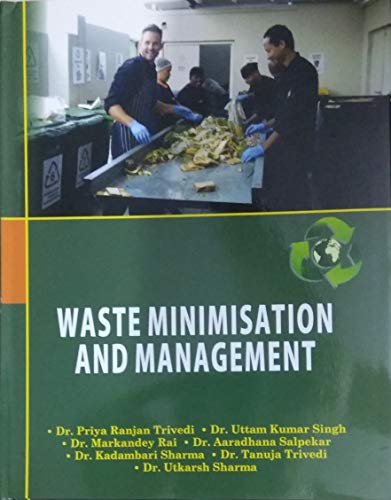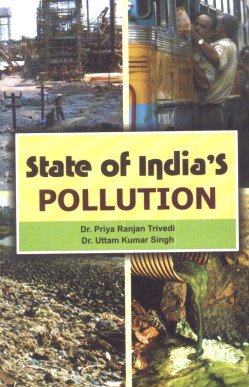Priya Ranjan Trivedi Uttam Kumar (6 results)
Product Type
- All Product Types
- Books (6)
- Magazines & Periodicals
- Comics
- Sheet Music
- Art, Prints & Posters
- Photographs
- Maps
- Manuscripts & Paper Collectibles
Condition
Binding
- All Bindings
- Hardcover (5)
- Softcover
Collectible Attributes
- First Edition
- Signed
- Dust Jacket
- Seller-Supplied Images
- Not Print on Demand (6)
Free Shipping
- Free US Shipping
Seller Location
Seller Rating
-
Whither Values? Whither Morality? Whither Character? Whither Ideology?: Strategies for Promoting Value Education in Schools, Colleges and Universities
Published by Jnanada Prakashan, 2020
ISBN 10: 817139101XISBN 13: 9788171391011
Seller: Vedams eBooks (P) Ltd, New Delhi, India
Book
Hardcover. Condition: New. Strategies for promoting value education in schools, colleges, and universities. The present publication titled "Whither Values ? Whither Morality ? Whither Character ? Whither Idsology ?: Strategies for Promoting Value Education in Schools, Colleges and Universities" is a very unique source of information not only for those working in the Schools, Colleges and University level Institutions but also for those working to the governmental and non-governmental organisations, public as well as private sector undertakings for enabling the employees and the people living under their catchment areas in acquiring expertise related to honesty, ideology, character and values. Important topics covered under this publication include Value Education, Character Education, Morality, Evolution of Morality, Moral Relativism, Axiology, Ethical Egoism, Ethical Intuitionism, Secular Ethics, Science Ethics, Science of Morality, Moral Skepticism, Ethics and Religion, Morality and Religion, Secular Morality, Moral Character, Ethics, History of Ethics, Meta-ethics, Normative Ethics, Virtue Ethics, Stoicism, Hedonism, Epicureanism, State Consequentialism, Deontological Ethics, Kantian Ethics, Utilitarianism, Divine Command Theory. Discourse Ethics, Pragmatic Ethics, Ethics of Care, Role Ethics, Anarchism, Postmodernism, Applied Ethics, Bioethics, Islamic Bioethics, Jewish Medical Ethics, Business Ethics, Machine Ethics, Political Ethics, Public Sector Ethics, Animal Ethics, Moral Psychology, Evolutionary Ethics, Descriptive Ethics Applied Ethics, Happiness, Humility, Simplicity, Ideology, Holistic Education, Cultural Evolution. Examples of Core Values, Applied Values, Personnel Values for Discovering etc.
-
State of India\'s Pollution
Published by Jnanada Prakashan, 2010
Seller: Vedams eBooks (P) Ltd, New Delhi, India
Contents Foreword 1 Introduction to India?s pollution 2 Water quality monitoring 3 National air quality monitoring programme 4 Municipal solid waste management 5 Ambient air quality monitoring 6 Pollution related cases in different courts in India 7 Pollution control implementation 8 Guidelines for transportation of hazardous wastes 9 Pollution abatement Bibliography IndexThe Government of India has established the Central Pollution Control Board CPCB with a view to monitoring and controlling pollution as a statutory organisation constituted in September 1974 under the water Prevention and Control of Pollution Act 1974The CPCB was entrusted with the powers and functions under the air Prevention and Control of Pollution Act 1981 It serves as a field formation and also provides technical services to the ministry of Environment and Forests of the Provisions of the Environment Protection Act 1986 Principal functions of the CPCB as spelt out in the water Prevention and Control of Pollution Act 1974 and the Air Prevention and Control of Pollution Act 1981 are i to promote cleanliness of steams and wells in different areas of the states by prevention control and abatement of water pollution and ii to improve the equality of air and to prevent control or abater air pollution in the countryAir Quality Monitoring is an important part of the air quality management The National Ambient Air Quality Monitoring NAAQM programme has been established with objectives to determine the present with objectives to determine the present air quality status and trends and to control and regulate pollution form industries and other source to meet the air quality standards It also provides background air quality data needed for industrial siting and town planning Besides this CPCB has an automatic monitoring station at Indraprastha Estate near ITO Intersection in New Delhi At this station Respirable Suspended Particulate Matter RSPM Carbon Monoxide CO Ozone O3 Sulphur Dioxide SO2 Nitrogen Dioxide NO2 and Suspended Particulate Matter SPM are being monitored regularlyThis book will be of immense help to all those contemplating to acquire expert knowledge of the pollution related issues in the context of our own country 288 pp.
-
Waste Minimisation and Management
Published by Jnanada Prakashan, 2019
ISBN 10: 8171399479ISBN 13: 9788171399475
Seller: Vedams eBooks (P) Ltd, New Delhi, India
Book
Hardcover. Condition: As New.
-
Natural Resources Conservation and Management
Published by Jnanada Prakashan, 2019
ISBN 10: 8171399967ISBN 13: 9788171399963
Seller: Vedams eBooks (P) Ltd, New Delhi, India
Book
Hardcover. Condition: As New.
-
State Of India*S Pollution
Published by JNANADA, 2010
ISBN 10: 8171394035ISBN 13: 9788171394036
Seller: Mispah books, Redhill, SURRE, United Kingdom
Book
Hardcover. Condition: Like New. Like New. book.
-
World Encyclopaedia of Environmental Sustainablity : Vol: (1 to 12 Set)
Published by Jnanada Prakashan, New Delhi, 2008
Seller: Vedams eBooks (P) Ltd, New Delhi, India
Hardbound. Condition: As New. New. Contents Vol. I. Global Sustainable Development Preface. 1. Agenda for sustainable development. 2. Action plan for sustainable development. 3. Future global sustainable development. 4. Issues of negotiation accountability implementation and reorientation in achieving sustainable development. 5. Sustainable development of socio economic and ecological systems. Vol. II. Biodiversity Conservation and Management Preface. 6. Biological diversity an introduction. 7. Biodiversity depletion issues and options. 8. Biodiversity conservation global and national efforts. 9. Biotechnology and prospects for biodiversity conservation. 10. CBD and other legal covenants to biodiversity protection. Vol. III. Global Energy Policies and Resources Preface. 11. Global energy crisis and future outlook. 12. World energy resources finite and infinite. 13. Energy efficiency conservation and management. 14. Energy policy global change and common future. Vol. IV. Green Movements Preface. 15. Environmental movements a holistic perspective. 16. Other Green Movements. 17. Indian Green Movements. 18. Global Green Movements. 19. American Green Movements. 20. Environmental Groups. Vol. V. Green and Eco Philosophy Preface. 21. Green Philosophy an introduction. 22. Green Philosophy a futuristic perspective. 23. Political ecology. 24. International understanding of ecophilosophy. 25. Environmentalism. Vol. VI. Environmental Policies and Perspectives Preface. 26. National responses to environmental policy. 27. Developed and developing countries perspective to environmental policy. 28. The Earth Summit. 29. Global environmental facility and other funding institutions. Vol. VII. Environmental Disasters Preface. 30. Land degradation deforestation and land restoration. 31. Desertification and habitat loss. 32. Desertification drought and water resource management. 33. Combating desertification global response and cost involved. Vol. VIII. Island Development and Biodiversity Preface. 34. An approach to island development. 35. Island development strategy and marine environmental health. 36. Island resource development and biological diversity. 37. Convention on small island. Vol. IX. Fragile Ecosystem Development Preface. 38. Protected areas National Parks and their networking. 39. Conserving protected areas future options. 40. Nature protection values ethics and laws. 41. Managing fragile ecosystems. Vol. X. Forest and Wildlife Protection Preface. 42. Decline of wildlife and its protection. 43. Decline of forests and its protection. 44. Preventing trade in endangered flora and fauna. 45. Other conventions for wildlife and forest conservation. 46. Wildlife and forest conservation issues and options. Vol. XI. Wilderness Planning and Management Preface. 47. Wilderness an introductory debate. 48. Global and national wilderness equivalents. 49. Wilderness management. 50. Wilderness and global nature preservation. Vol. XII. Marine Pollution Control Preface. 51. Pollution and marine environmental health. 52. Marine and coastal zone utilisation in context of rising sea levels. 53. Protection of marine environment and ocean resources. 54. Institutions and conventions for pollution control. Bibliography. Index. The term Sustainable Development was brought into common use by the World Commission on Environment and Development (The Brundtland Commission) in its 1987 Report Our Common Future. The idea of sustaining the earth has proved a powerful metaphor in raising public awareness and focusing on the need for better environmental stewardship. The Brundtland Commission's definition of the term meeting the needs of the present generation without compromising the needs of future generation is strongly endorsed by this Report. We also believe with the Brundtland Commission that meeting the needs of the poor in this generation is an essential aspect of sustainably meeting the needs of subsequent generations. There is no difference between the goals of development policy and appropriat.






